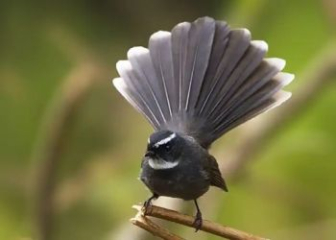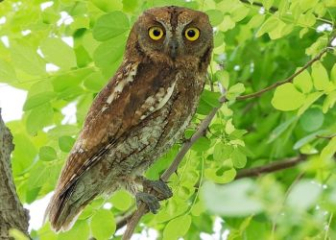Blue Jay - Origin, Behavior and Some Interesting Facts
Blog | by
The Blue Jay, a wild bird native to North America, is a member of the crow family and is highly intelligent, able to mimic the calls of many different birds.
The Blue Jay is a native North American bird of the crow family. It has an elegant appearance with a distinctive blue color, a playful and mischievous personality, and a unique ability to imitate sounds.
However, the keeping of blue jays in captivity is currently very limited and tightly controlled because they are a wild bird, protected by many laws.
Let's explore many interesting things about blue jays with nicebirds , from their origin, appearance, habits to little-known facts about this intelligent, mischievous bird!
Blue Jay Information :
|
Scientific name |
Cyanocitta cristata |
|
Vietnamese name |
Blue rag |
|
English name |
Blue Jay |
|
Source |
North America |
|
Set |
Passeriformes - Order Passeriformes |
|
Surname |
Corvidae - Crows |
|
Size |
25 - 30 cm |
|
Lifespan |
About 7 years, maximum 26 years |
|
Behavior |
Smart, good at catching sounds |
|
Food |
Omnivorous, can eat seeds, fruits, insects,... |
Origin & subspecies of blue jay

The blue jay is a wild bird native to North America.
The scientific name of the Blue Jay is Cyanocitta cristata, English name is Blue Jay, one of the native birds of North America. Currently, there are 4 main subspecies of Blue Jay with specific distribution areas as follows:
- C. c. cristata: Distributed in the eastern and central United States.
- C. c. bromia: Distributed in Canada
- C. c. cyanotephra: Distributed in eastern Texas, central United States
- C. c. semplei: Distribution in Florida.
The name “Cyanocitta” is derived from the Greek, with “Kyanos” meaning “blue” and “kitta” meaning “singing bird”. Together the name means “blue songbird”, describing the blue plumage of the blue jay.
Blue Jay bird appearance

The striking appearance of a blue jay.
The Blue Jay is easily recognizable by its distinctive blue plumage and striking body structure. Find out more in the description below.
Size & Shape :
- Length : 25 - 30 cm (including tail)
- Wingspan : 34 - 43 cm
- Weight : Average 70 - 100g
- The tip: Of the hair on the head, also called the “crested head”
- Beak : Black, straight, pointed.
- Legs : Dark gray, strong, curved nails.
- Eyes : Dark brown, with distinct black rims.
Characteristic coat color :
- The entire back, head, wings and tail are bright blue, which is also the most prominent feature of the blue jay.
- The chest, belly and undertail are white.
- There is also a black “U” shaped collar on the chest and black stripes extending from the beak through the eyes, making it look like it is wearing a “mask”.
- The wings and tail have alternating white and dark blue stripes creating a unique pattern.
Distinguishing between male and female blue jays :
-
It is impossible to distinguish male and female based on appearance because they have no obvious differences.
Blue Jay Bird Nest
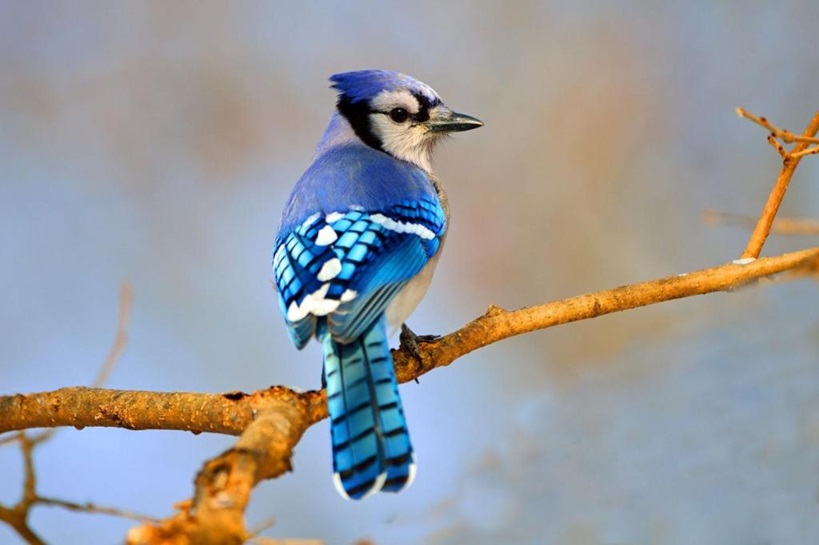
Blue jays are very intelligent birds.
Blue jays are considered one of the smartest and most agile birds in the crow family - Corvidae. Besides, they also have many interesting habits and behaviors, let's learn more details here.
Smart, agile
Blue jays are very intelligent birds, they have good memory and learning ability, and can imitate the calls of many other birds. Many individuals even learn the call of hawks to threaten enemies.
In addition, this bird is also highly alert. When it detects signs of danger, it will make a very loud cry to warn all other birds in the area, likened to the "alarm bell" of the green forest.
Likes to hide and spread acorns
Blue jays have an omnivorous diet, they can eat seeds, insects, animals or fruits, but prefer to eat acorns and cereal seeds.
This bird also has a unique habit of “hoarding food”, they often hide acorns or food in the ground or in the bark of trees for use when needed. And thanks to this action, some of the forgotten seeds have germinated into plants, contributing to the protection of the diversity of vegetation.
It is remarkable that although jays hide food in many places, after a long time, they can still locate the exact places they have hidden. Many birds are even quite cunning when pretending to hide food to deceive other species.
Can make many different sounds
Blue Jays have an incredibly rich vocal system with dozens of different sounds. Each sound has a specific purpose, typically as follows:
- “Jay! Jay!”: A very loud cry used to warn of danger.
- Soft cooing: Communication with others.
- Imitate: The calls of other birds such as eagles and hawks for self-defense.
Unstable migration behavior
Blue jays are not strictly migratory birds, as some individuals will travel south to avoid the cold. But this migration is not consistent, with some years they migrate and others they don't, depending on the severity of the weather.
Reproductive behavior
The breeding season for blue jays usually takes place from March to July, depending on the habitat. The breeding process takes place as follows:
- Blue jays will make a cup-shaped nest from dry branches, roots, and moss; the nest is usually placed in tree branches 3 - 10m high.
- Each clutch, the female lays 3 - 7 eggs, which are light blue or olive green with brown spots.
- The female will incubate the eggs for 16 - 20 days, while the male takes on the task of finding food.
- The chicks will leave the nest after 2 - 3 weeks of incubation.
Are blue jays commonly kept?
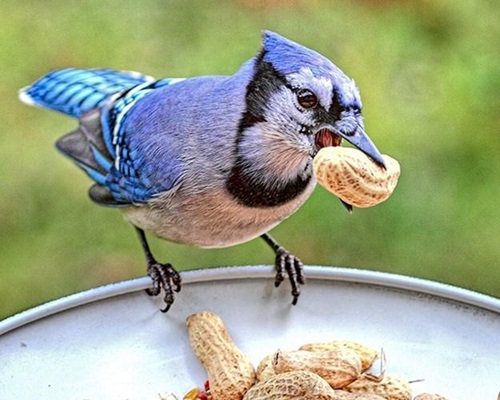
A blue jay is carrying a peanut.
Blue jays are rare in captivity today because they are a wild bird native to North America. They are protected by wildlife laws in many countries.
Typically in the US, there is the Migratory Bird Treaty Act - which prohibits the capture, captivity or sale of blue jays without a license.
So if you want to raise them, you need to have a license and meet the appropriate conditions according to current laws.
Fun facts about blue jays
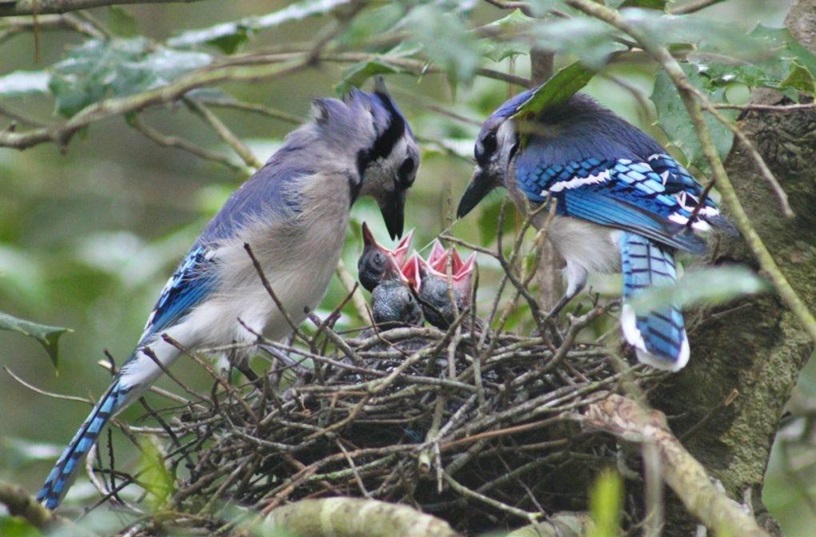
Image of a father and mother blue jay taking care of their chicks.
Here are some interesting facts about blue jays that not everyone tells you. Let's learn more to understand more about this bird!
- Although the blue jay's feathers appear blue, they do not actually have any blue pigment, but the color is the result of the Tyndall phenomenon of light diffraction - the same reason why the sky is blue.
- The feathers on a bird's head can be erect or flat depending on its mood, usually raised when it is alert or angry, and lowered when it is foraging or feels safe.
- In some states in the US, blue jays are considered a symbol of resilience because they are adaptable, intelligent and strong.
- They may eat the eggs or young of some other bird species.
- It is estimated that a single blue jay can bury 3,000 to 5,000 acorns over the course of a year, covering a radius of up to 5 km.
- The highest recorded lifespan in blue jays is 26 years.
Blue Jay FAQ
What do blue jays eat?
Blue jays are omnivorous, eating seeds, soft succulent fruits, arthropods, and small vertebrates.
Does the proverb "good looks, good eyes" have anything to do with the blue jay?
No, because blue jays are not common in Vietnam and the meaning of this proverb is used to refer to people who appear to be incompetent and useless.
What is the average lifespan of a jay?
The average lifespan of a blue jay in the wild is about 7 years.
Beautiful blue jay pictures
Because blue jays are not popular in captivity, here we have collected many pictures of blue jays in the wild for you to admire and feel the unique beauty of this intelligent bird!
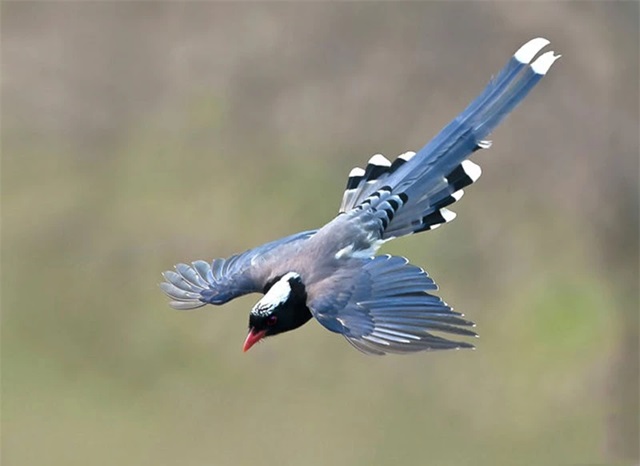
A blue jay is flying in the sky.
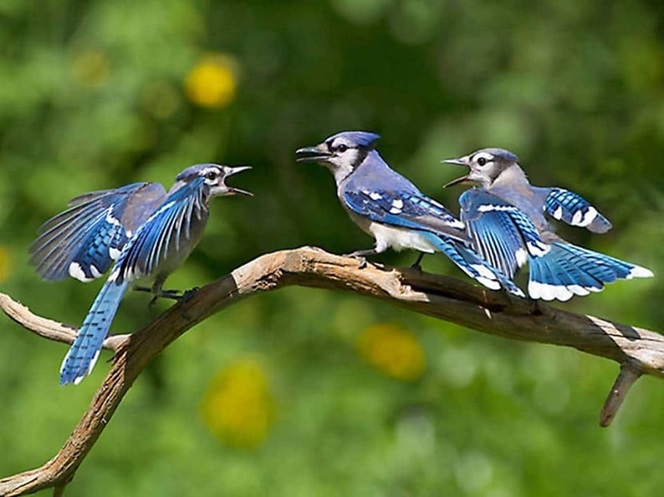
The blue jays were perched on the same dry branch.
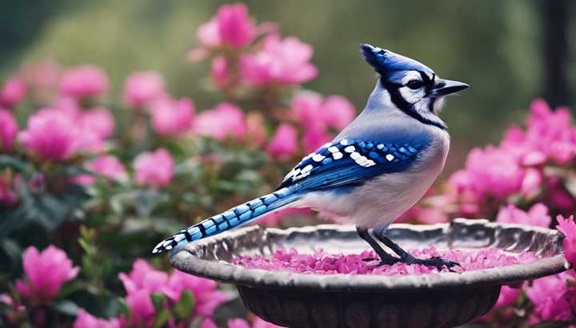
The image of the blue jay is extremely beautiful.
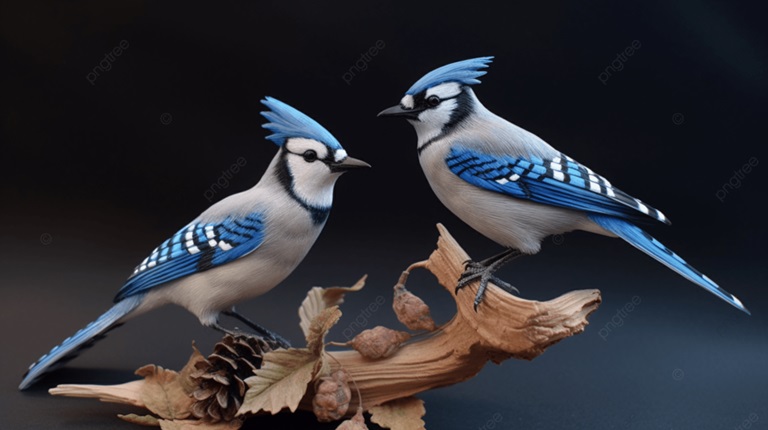
High quality two blue jays desktop wallpaper.

Image of a blue jay spreading its wings.
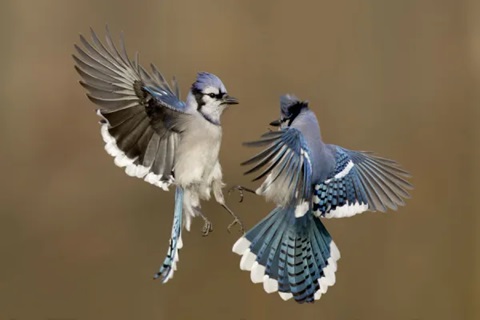
Two blue jays are “fighting” in the sky.
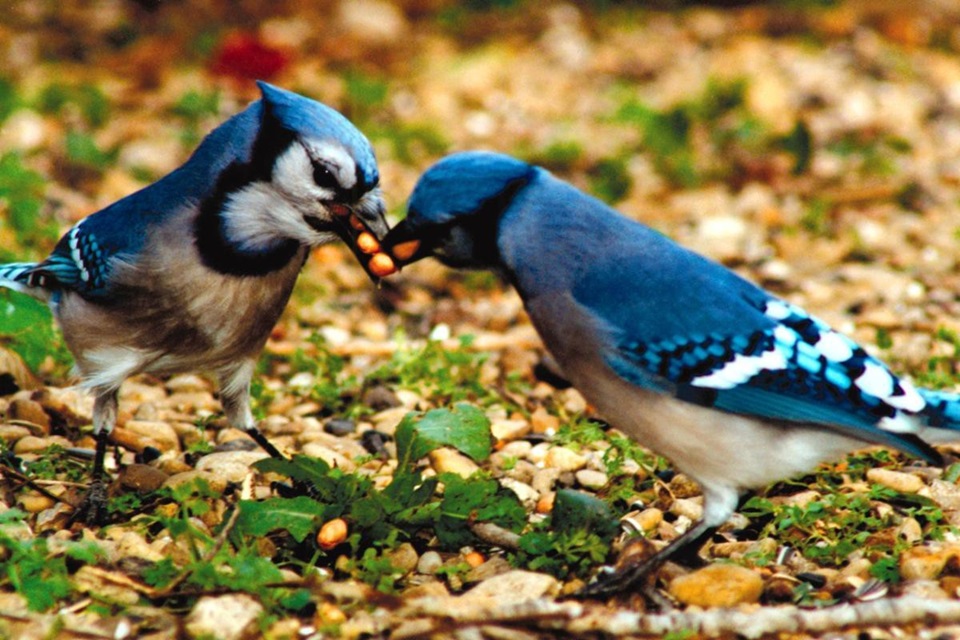
Two blue jays are picking acorns.
Through the above article, nicebirds.net has shared with you a lot of interesting information about the blue jay . This is not only a typical symbol of North American wildlife but also plays an important role in the ecosystem. Although this bird is not commonly kept as a pet, it still receives a lot of attention from nature lovers thanks to its beautiful appearance, intelligent nature and many interesting mysteries waiting to be discovered.
If you want to learn more about other beautiful and impressive birds, visit our Blog section now!

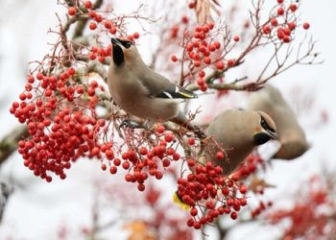

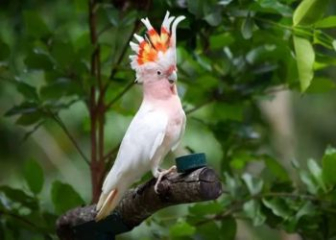
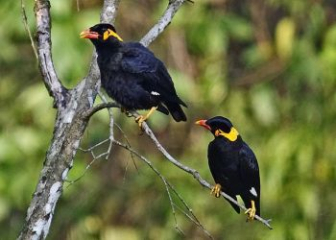
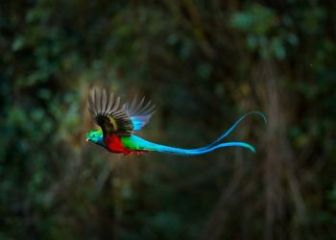





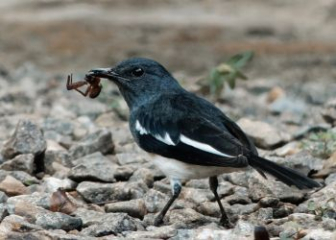
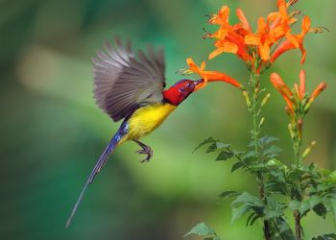


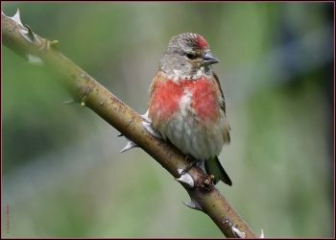
_350x250.jpg)
